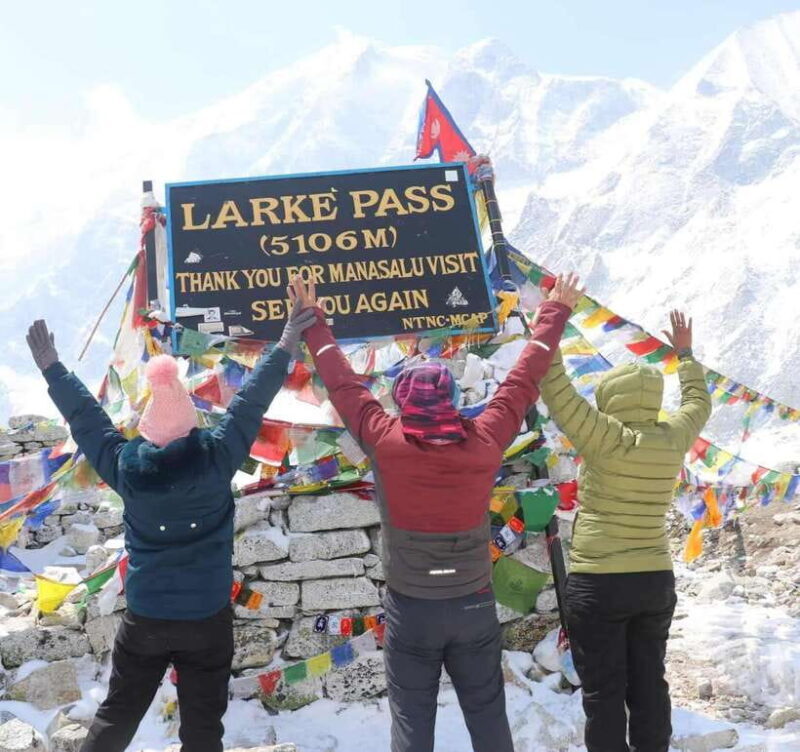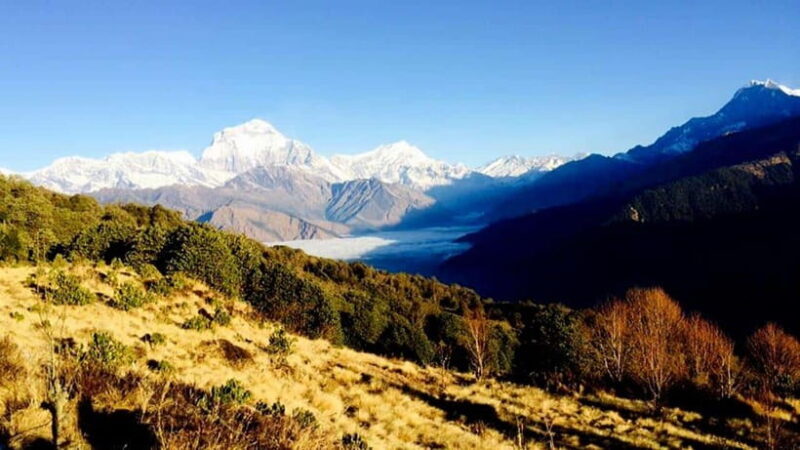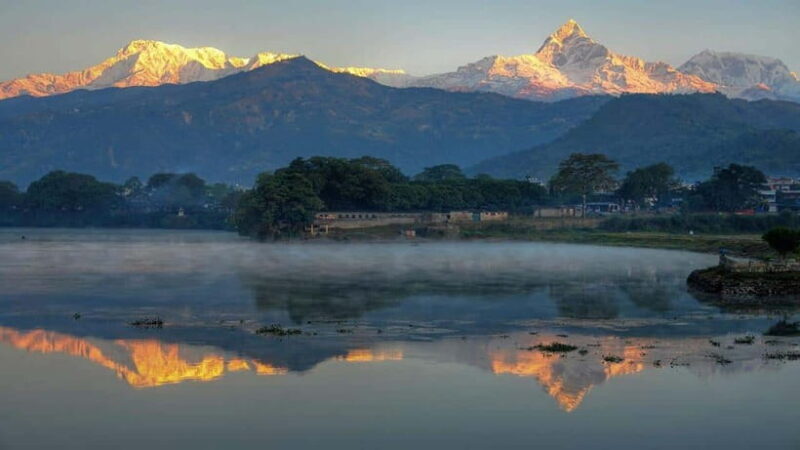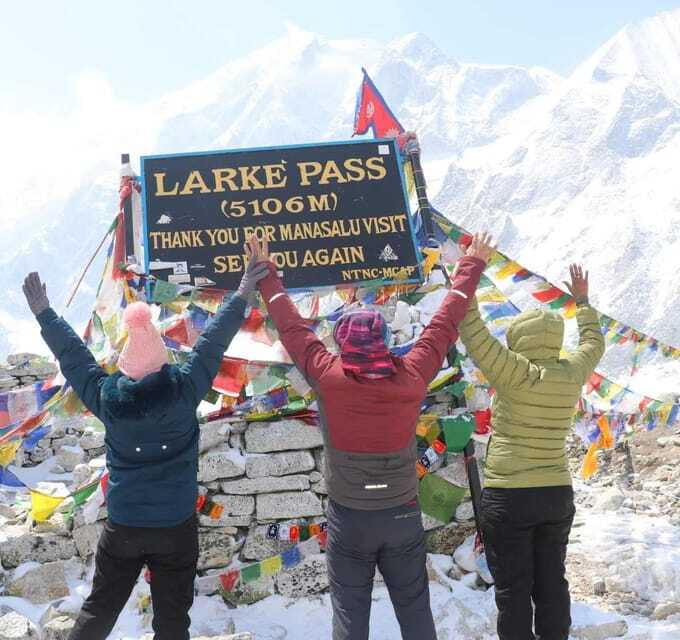Planning a trek through Nepal’s famed Annapurna region? This 11-day guided journey promises a mix of spectacular scenery, culture, and the thrill of crossing Throng-la Pass. We’ve reviewed this tour to help you decide if it’s a fit for your travel style—whether you’re a seasoned hiker or a first-time trekker eager for authentic mountain experiences.
Two things we especially appreciate about this trek are the diverse landscapes—from lush valleys to high-altitude deserts—and the local village visits, which offer genuine glimpses into Himalayan life. On the flip side, the itinerary’s physical demands, especially the ascent over Throng-la Pass, mean it’s not for everyone, particularly those with mobility issues or altitude sensitivities. This adventure suits active travelers who crave both natural beauty and cultural exchanges—ideal for those with a good level of fitness and a sense of adventure.
Key Points

- Stunning mountain vistas of the Annapurna and Mt. Annapurna ranges.
- Cultural visits to charming villages along the route provide authentic Himalayan life.
- Crossing Throng-la Pass offers a high-altitude challenge with breathtaking views from the top.
- Complete logistics: all permits, accommodations, and transport included for a hassle-free experience.
- Variety of food options available, from local Dal Bhat to Western favorites like pizza, catering to different tastes.
- Small group size (limited to 10 participants) ensures personalized guidance and camaraderie.
An In-Depth Look at the Annapurna Trek with Throng-la Pass

Our review is based on the detailed itinerary, traveler experiences, and practical considerations. This trek is designed to balance natural beauty, cultural exposure, and physical challenge, making it a compelling option for a broad range of trekkers.
You can also read our reviews of more tours and experiences in Kathmandu.
Starting Point: Kathmandu to Beshisahar and Dharapani
The adventure kicks off with a bus journey from Kathmandu—about 9 hours of travel. While long, this initial leg is a window into Nepal’s diverse landscape, from urban sprawl to verdant hills. The ride ends in Dharapani, a quiet village where we settle into modest local accommodations, setting the tone for a trek that values authenticity over luxury.
Passing Through Classic Trail Stops
- Dharapani to Chame: This 6-hour trek introduces trekkers to the lush forests and terraced fields of the valley. Chame, at 2,700 meters, is a popular stop for acclimatization and features a laid-back vibe with local guesthouses.
- Chame to Pisang: As we ascend to 3,200 meters over 5 hours, the landscape begins to change—more rocky, with views of the Annapurna massif. Pisang’s charming village atmosphere and panoramic vistas make it a favorite stop.
- Pisang to Manang: Covering 17 km in about 6 hours, this leg takes us to the heart of Himalayan culture at 3,440 meters. Traveler reviews highlight the town’s peaceful ambiance and the chance to rest and acclimate.
Acclimatization and High-Altitude Challenges
A dedicated rest day in Manang helps prevent altitude sickness—a smart move given the elevation gains. The town itself is a hub of Tibetan-influenced architecture and offers some cultural sites, plus the chance to connect with fellow trekkers.
More Great Tours NearbyClimbing Higher: Yak Kharka & High Camp
From Manang, we trek to Yak Kharka at 4,050 meters, then onward to High Camp at 4,925 meters. These sections involve steady climbs over about 5 hours each day but reward trekkers with views that are truly worth the effort. We loved the way the landscape transitions into stark, windswept terrain with glimpses of snow-capped peaks.
The Highlight: Crossing Throng-la Pass
At 5,416 meters, Throng-la Pass is the highest point of the trek. The ascent is challenging but manageable with proper acclimatization. Many travelers describe the moment reaching the pass as exhilarating, with sweeping views of the Annapurna and Dhaulagiri ranges. Expect a steep, sometimes icy trail, so good hiking gear and cautious steps are essential. Once over, the descent into Muktinath offers a sense of accomplishment complemented by stunning mountain vistas.
Muktinath, Jomsom, and Down to Pokhara
From Muktinath, we trek to Kagbeni and then descend to Jomsom, a lively town with a mix of locals and trekkers. Jomsom is a transportation hub, often bustling with mules and small planes. The journey continues by bus to Tatopani, famous for its natural hot springs—perfect for relaxing those tired muscles. The final leg takes about 6 hours, ending with a scenic drive to Pokhara, where you can unwind by the lake and reflect on your Himalayan adventure.
Practical Aspects and Comfort
Accommodation ranges from simple guesthouses to more comfortable lodges, depending on the location, with the Throng-la Pass area offering more basic options due to its remoteness. Food choices are plentiful—whether you’re craving dal bhat, momos, or even pizza, the variety keeps hunger at bay during the trek. Travelers have appreciated the availability of different recipes, making this a trek that caters to diverse tastes.
Transportation, permits, and entrance fees are included, simplifying planning. The group size is limited to 10, providing a more intimate experience with your guide—an important feature for safety and cultural insight.
Physical and Logistical Considerations
This trek calls for a decent level of fitness, especially for the altitude gains and the day over Throng-la Pass. Reviews mention that the journey can be physically demanding but very rewarding. The scheduled acclimatization days help, yet you’ll want to be prepared for rapid weather changes and variable trail conditions.
Food and Cultural Experiences
While the focus is on nature, the villages along the way are cultural gems—simple, welcoming communities where you can observe Himalayan traditions firsthand. Food is a major highlight, with local dishes and Western options available, satisfying different cravings after a day’s hike.
Cost-Benefit Analysis
At $586 per person, the trek offers good value considering the included permits, guide services, accommodations, and transportation. For those seeking an authentic Himalayan experience without the hassle of planning every detail, this package strikes a balance between affordability and quality.
Who Is This Trek Perfect For?

This adventure is best suited for active travelers who enjoy physically demanding activities and want to see the real Nepal beyond the postcard images. It’s a fantastic option for those interested in cultural exchanges, mountain scenery, and the thrill of crossing a high-altitude pass. However, it’s less suitable if you have mobility issues, are pregnant, or have altitude sickness concerns. Given the physical effort involved, some prior hiking experience and good health are recommended.
Final Thoughts

This Annapurna Trek with Throng-la Pass delivers a memorable combination of challenging terrain, awe-inspiring vistas, and authentic Himalayan culture. From lush forests and charming villages to the adrenaline rush of crossing a high mountain pass, it offers a comprehensive taste of what makes Nepal a trekking paradise.
The experience’s real strength lies in its balance: manageable logistics, accessible guides, and a route that reveals the diverse landscapes of the Annapurna region. Plus, the availability of varied food options and the intimacy of small group sizes make it a journey that feels personal and enriching.
If you’re craving a trek that pushes your limits while rewarding you with some of the most spectacular mountain scenery on Earth, this tour is worth considering. It’s an adventure designed for those who love nature, culture, and a touch of mountain challenge.
FAQ

What is included in the tour package?
The package includes a professional guide, all accommodations during the trek, permits and entrance fees, transportation to and from the trek, and a Trekker’s Information Management System (TIMS) card.
Are meals provided on the trek?
Meals during the trek are not included, but a variety of options are available, from local Nepali dishes to Western favorites like pizza. The food quality is generally good, with many travelers noting the delicious recipes.
How difficult is the trek?
The trek involves some physically demanding sections, especially crossing Throng-la Pass at 5,416 meters. It’s best suited for those with a decent fitness level and some prior trekking experience.
What should I bring?
Prepare with comfortable shoes, warm clothing, a hat, camera, snacks, sunscreen, reusable water bottle, and trekking gear. Weather can change rapidly, so layered clothing is recommended.
Is the group size small or large?
The tour limits participants to 10 people, ensuring personalized attention and a more intimate experience.
Can children participate?
No, this trek is not suitable for children under 8 years old due to physical and altitude demands.
What is the best time to do this trek?
While the specific starting times depend on the schedule, Nepal’s trekking seasons are generally autumn and spring for stable weather and clear views.
What if I need to cancel?
You can cancel up to 24 hours in advance for a full refund, providing some flexibility if your plans change.
To sum it up, this Annapurna Trek with Throng-la Pass offers a well-rounded adventure filled with breathtaking sights, cultural insights, and a satisfying physical challenge. It’s perfect for travelers eager to experience Nepal’s natural grandeur without sacrificing comfort or safety. Whether you’re seeking a once-in-a-lifetime challenge or a meaningful cultural journey, this trek makes a compelling case for a Himalayan expedition.
You can check availability for your dates here:More Hiking & Trekking Tours in Kathmandu
More Tour Reviews in Kathmandu
Not for you? Here's more nearby things to do in Kathmandu we have reviewed
- From Lukla: Everest Base Camp (EBC) 10-Day Trek
- Kathmandu : Everest Mountain Flight – with Private Transfers
- Full Day : Kathmandu Sightseeing By Bus Day Trip
- Kathmandu: 7 UNESCO World Heritage Sites Day Tour
- Kathmandu: 8-Day Langtang Valley Trek with Transfers
- Thamel Rickshaw Tour
- Everest View Motorbike Tour- 6 Days
- Kathmandu: Top 4 UNESCO Sites Private/Group Tour with Lunch
- From Oceans to Mountains-9 Days (Nepal Guided Tour)
- From Kathmandu: Everest Base Camp Helicopter Tour landings
- Kathmandu: Food and Drink Walking Tour
- Life and spirituality tour of Kathmandu
